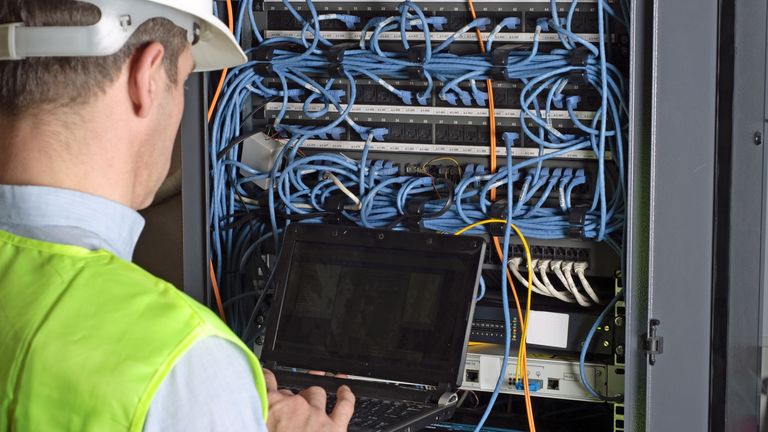The TSI remote assessment is based on modern communication technologies and essentially consists of a virtual meeting by means of a web conference with several participants. It is useful when an on-site audit is not possible, due to related travel restrictions, a contact ban or the lack of time.
This involves discussing documents provided in advance and examining organizational issues using documents, photos or videos to try to determine a proper course of operation. During the TSI remote assessment you are provided with our 20 years of experience in the auditing and evaluation of data centers digitally and have our full support on your side even in crisis situations.
Procedure for the remote assessment
The process is carried out in four successive steps:
Step 1 – Kick-off Meeting by phone or web conference (1-2 hrs)
- Introduction of all participants, their role in general and specifically in the data center evaluation conformity check.
- The operator explains in short (e.g. by a PPT presentation) the DC design and some background.
- TÜVIT explains the evaluation process.
- TÜVIT explains the documentation requirements.
- TÜVIT provides a requirements list for a self-assessment, which has to be returned with all the other documents demanded.
Step 2 – Provision of documentation and assessment by TÜViT
- The operator provides the documentation 2 weeks kick-off electronically.
- TÜVIT analyses the documents provided and prepares the remote assessment. Depending on the quality of the documents, a list of questions (questionnaire) will be send to the operator before the remote audit.
- Self-assessment by means of TÜVIT’s criteria list.
- Basic design objectives of the DC (areas and redundancy concepts)
- Precise location: site plans
- Floor plans of security areas (IT, technical) and neighbouring areas
- Fire protection: zoning plan, technical systems for detection and extinguishing
- Security: zoning plan, technical systems: access control, intrusion detection, video
- Electrical supply: single line diagram and routing
- Cooling: piping and instrumentation plan and routing
Step 3 – Conducting the remote audit (4-6 hrs)
- The operator will get an invitation for the web conference.
- The questionnaire will be discussed as well as other aspects identified in the documents which need some explanation
- It will be asked for some live photos or videos
- It will be asked for screen sharing of the BMS
- It will be necessary that engineers (electrical, mechanical, security) participate the meeting
The planned procedure for the remote audit is described below. The duration should be limited to about four to six hours. Depending on the scope of the audit and the number of locations, the web conference can also be divided into two days of four hours each. A short coffee break of about 10 minutes halfway through is also useful.
- short greeting and introduction
- coordination of the procedure
- If possible: view of the BMS screen surface or current photos / screenshots. The aim is to get an impression of trouble-free operation.
- overview of system statuses
• Current loads on transformers and UPS
• Characteristic values of key indicators (KPI) like PUE
• Temperature / humidity in computer rooms
• Pending / acknowledged fault and alarm messages. If there are faults in parts of the system, it would be helpful to be able to view a relevant ticket or repair order.
• Photos of the status reports of the security systems (at the day of the remote assessment).
- provision of exemplary photos of white space and technical area, exemplary for one supply path
• Electrical rooms (HV, transformer, gen-set, LV-MD, UPS, batteries)
• Mechanical rooms (pumps, chillers, etc.)
• Carrier room
• Two IT rooms
- review of maintenance records from the last two years
• Lightning protection system
• Fire alarm system
• Fire extinguishing system
• Intrusion detection system
• Genset (exemplary of one system)
• UPS / batteries (exemplary one system)
• Chillers (exemplary one plant)
• Condenser (exemplary one plant)
• Air handling units (exemplary one plant)
- Presentation of protocols of the regular system inspections of the past months.
Step 4 – Preparation of an evaluation report in English
- After the audit an evaluation report is made that summarizes all the findings and identified gaps
- Review of the evaluation report
Tel.: +49 201 8999-567
Fax: +49 201 8999-555
m.lukas@tuvit.de







